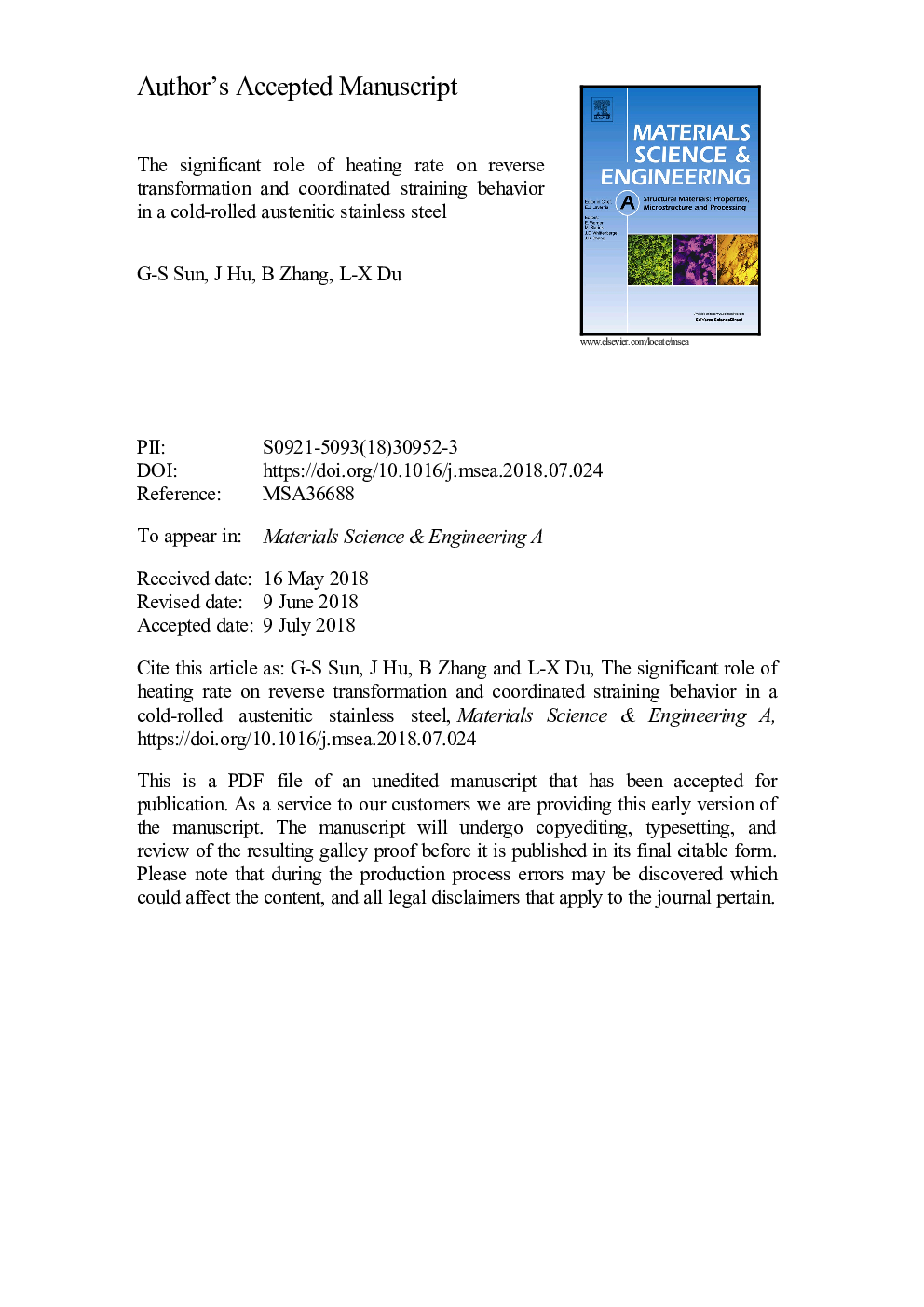| Article ID | Journal | Published Year | Pages | File Type |
|---|---|---|---|---|
| 7971688 | Materials Science and Engineering: A | 2018 | 27 Pages |
Abstract
The effect of heating rate on the mechanism of reverse transformation from martensite to austenite during continuous heating process was studied in a cold-rolled 304 stainless steel, and the corresponding mechanical properties were analyzed. It indicated that the reverse transformation occurred diffusionally at slow heating rate range (<â¯10â¯Â°C/s). However, rapid heating rates (>â¯40â¯Â°C/s) resulted the reverse transformation to occur via martensitic shear-type. At medium heating rates (10-40â¯Â°C/s), the reversion mechanism gradually changed from diffusional to shear-type. The diffusional reversed austenite was characterized by equiaxed, defect-free, nano/ultrafine grains with grain size of 100-500â¯nm, while the martensitic shear-type reversed austenite exhibited lath-type/banded grains with high defects density. At 100â¯Â°C/s, an excellent combination of high-strength and high-ductility with significant work hardening ability was obtained. Moreover, the product of strength and ductility was enhanced over three times from 11.14â¯GPa (at 2â¯Â°C/s) to 35.78â¯GPa (at 100â¯Â°C/s). The strain gradient due to the heterostructure, the glide of preexisting mobile dislocations and the controlled release from TRIP effect contributed to the improved mechanical properties. The study also indicated that reversion mechanism had no effect on austenite texture.
Related Topics
Physical Sciences and Engineering
Materials Science
Materials Science (General)
Authors
G.-S. Sun, J. Hu, B. Zhang, L.-X. Du,
